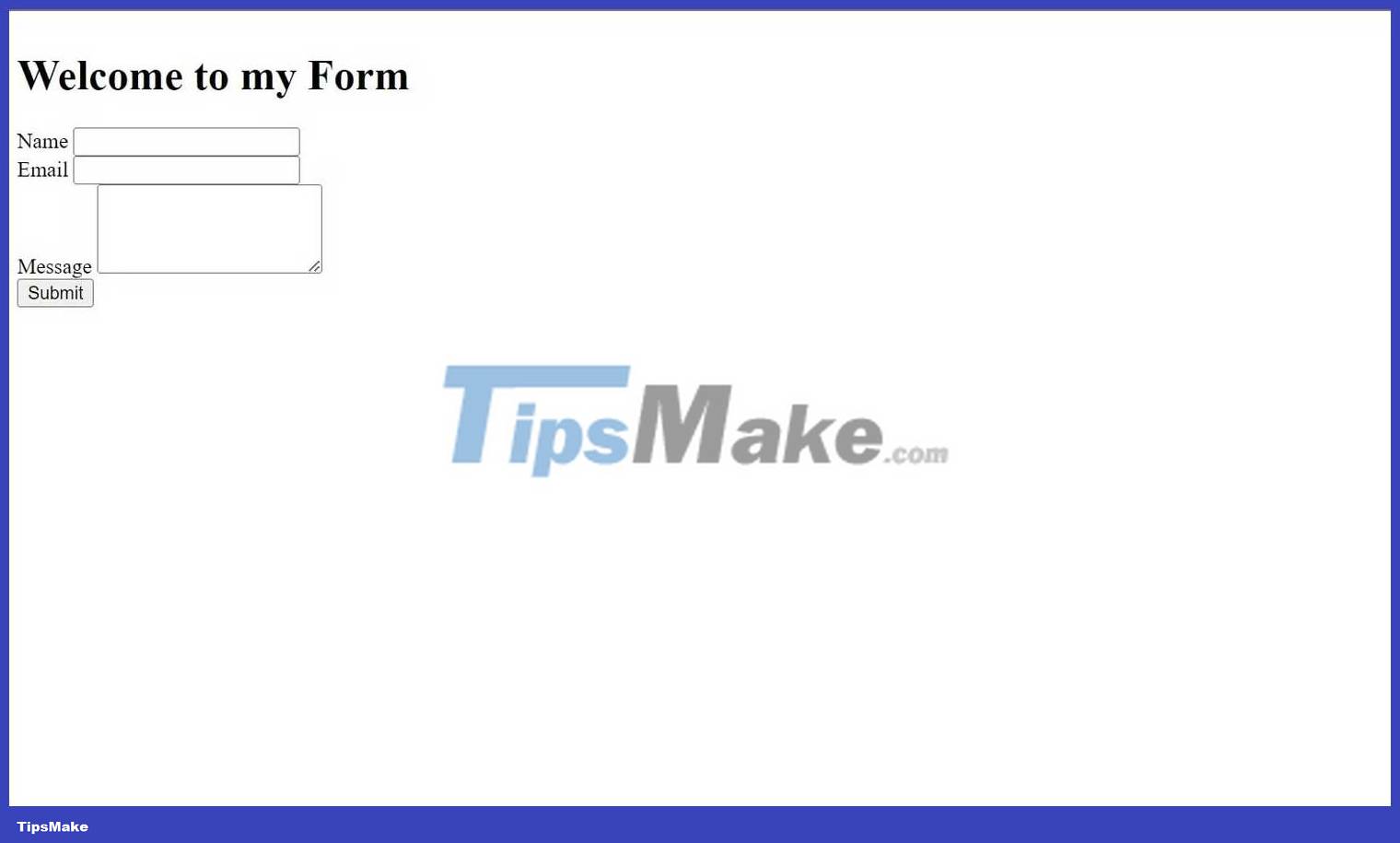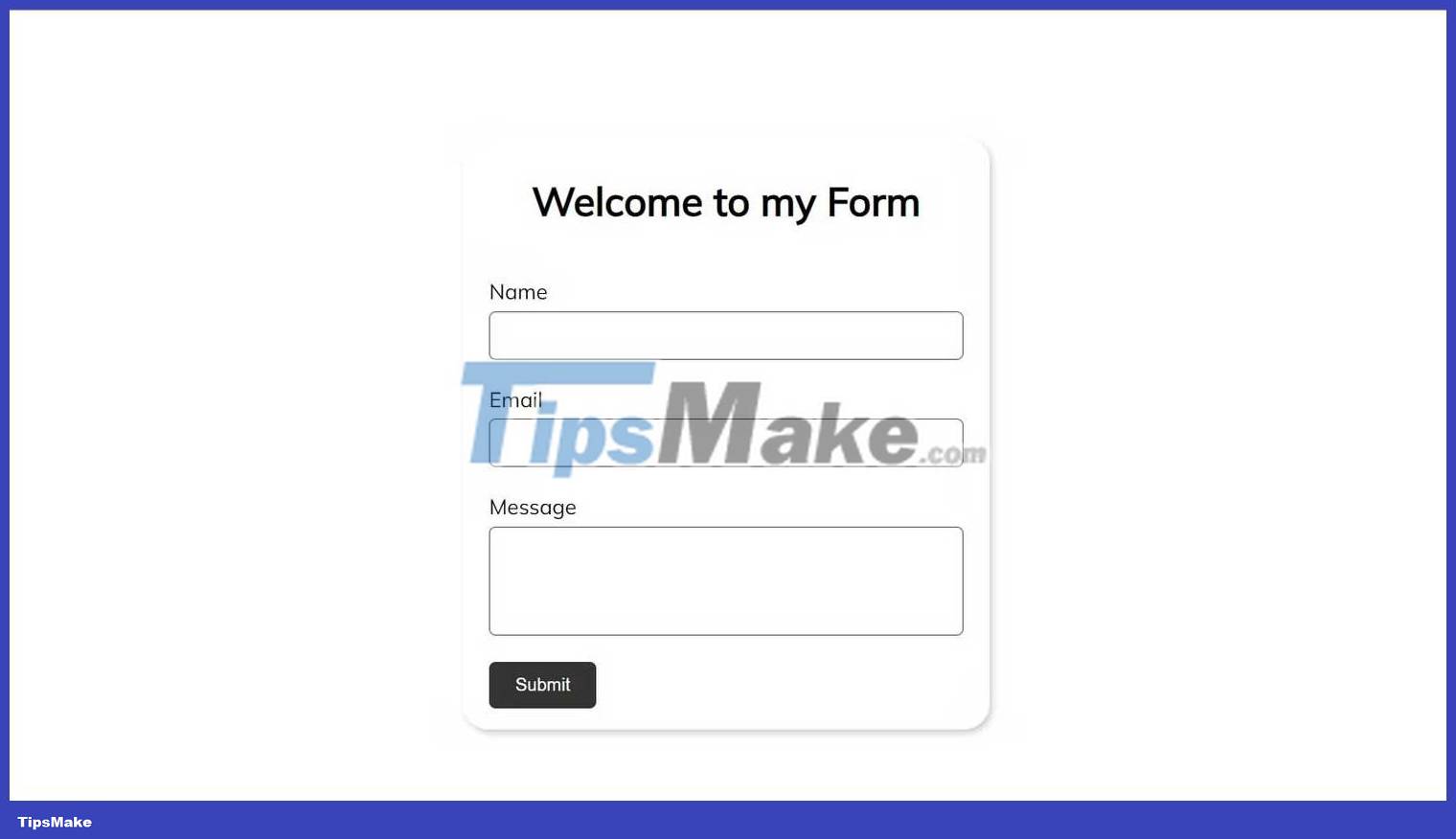How to create a simple contact form using HTML, CSS, and JavaScript

Contact forms are an important element in the web, allowing users to reach queries, feedback or requests from viewers.
Here's how to create a basic contact form for your website. From setting up your project to adding form validation and styling, make sure you have a beautiful contact form.
Project setup
Before starting to code, make sure to set up your programming environment. Open your favorite editor or one of the recommended IDEs like Visual Studio Code or Sublime Text.
Create project folders to keep your HTML and CSS files organized. In this folder, create separate files for HTML ( index.html ) and CSS ( style.css ). Finally, link the CSS file within the HTML document's body using the tag.
Create HTML structure
The foundation of a contact form is its HTML structure. Here's how you can create the necessary HTML elements for a contact form.
Welcome to my Form
The above HTML code creates a form component and contains input fields to receive user input for the contact form. Currently, your contact form will look like this:

Style the contact form
An attractive and user-friendly contact form will enhance the overall experience. The CSS code below uses flexbox properties and CSS box templates like padding and margin to style the contact form for a better user experience.
* { margin: 0; padding: 0; box-sizing: border-box; } html { font-size: 62.5%; } body { font-family: "Mulish", sans-serif; height: 100vh; display: flex; justify-content: center; align-items: center; } main { width: 40rem; box-shadow: 2px 3px 5px rgba(0, 0, 0, 0.2); margin: 0 auto; height: 45rem; border-radius: 2rem; padding: 2rem; } h1 { text-align: center; font-size: 3rem; padding: 1rem 2rem; } form { margin: 3rem 0; display: flex; flex-direction: column; row-gap: 2rem; } .input__container { display: flex; flex-direction: column; row-gap: 0.5rem; } .input__container label { font-size: 1.6rem; } .input__container input, textarea { padding: 1rem 2rem; border-radius: 5px; border: 1px solid #555; resize: none; } button { align-self: flex-start; padding: 1rem 2rem; border-radius: 5px; border: none; background: #333; color: #fff; cursor: pointer; }The contact form will look like this:

Contact form validation
Ensuring the accuracy and completeness of information provided by users is important. One effective method involves using JavaScript for client-side form validation. To start, create a script tag at the end of the HTML file and target the form element.
Then, attach an event listener to the form for users to submit information.
form.addEventListener("submit", function (event) { });Next, prevent the default page reload action by forms and select the value in the email field.
form.addEventListener("submit", function (event) { // Prevent page reload on submit event.preventDefault(); // Selecting the email value filled by the user const email = document.getElementById("email").value; });Finally, use a regular expression to check the authenticity of the user's email and display a notification according to the email value.
form.addEventListener("submit", function (event) { // Preventing page reload on submit event.preventDefault(); // Selecting the email value filled by the user const email = document.getElementById("email").value; // Checking for valid email using a simple regex pattern const emailPattern = /^[^s@]+@[^s@]+.[^s@]+$/; if (!emailPattern.test(email)) { alert("Wrong email format"); return; } // If everything passes, show success message alert("Form submitted successfully"); });Check and correct form errors
No project is complete without testing. To ensure your form works correctly, enter the necessary values, submit the form, and validate it for desired results.
Hope the article is useful to you.
You should read it
May be interested
- How to create a Google Form form on Google Drive
 google form on google drive form will help users create a table to collect information, comments, votes, or contact information of a group of subjects.
google form on google drive form will help users create a table to collect information, comments, votes, or contact information of a group of subjects. - 5 steps to learn a dynamic HTML web component profile
 html is an important part of websites we still use every day. however, not everyone can understand how a website is structured.
html is an important part of websites we still use every day. however, not everyone can understand how a website is structured. - What is JavaScript? Can the Internet exist without JavaScript?
 not everyone knows what javascript is and how it works. the long and fascinating development history of javascript as well as what we can do with javascript is still unknown.
not everyone knows what javascript is and how it works. the long and fascinating development history of javascript as well as what we can do with javascript is still unknown. - Successfully created 2-way chat framework on the web with only CSS and HTML
 in fact, most of the chat features on the web have something in common that is developed based on javascript ...
in fact, most of the chat features on the web have something in common that is developed based on javascript ... - Form Validation in JavaScript
 form validation is usually used on the server, after the client has entered all necessary data and then click the submit button.
form validation is usually used on the server, after the client has entered all necessary data and then click the submit button. - 5 free online HTML editing tools that test the best code
 if you ask someone how to become web developers, they will tell you about javascript, python, web programming, etc. and of course html.
if you ask someone how to become web developers, they will tell you about javascript, python, web programming, etc. and of course html. - 5 free HTML templates for creating web pages quickly
 the following suggestions are simple templates that you can adjust to your own needs, to create a simple website. the template comes with instructions for you to use them even if you are a beginner to html.
the following suggestions are simple templates that you can adjust to your own needs, to create a simple website. the template comes with instructions for you to use them even if you are a beginner to html. - Form - Form in CSS
 forms - forms are an integral part of any kind of website. let's see how to build the display interface part of a basic form.
forms - forms are an integral part of any kind of website. let's see how to build the display interface part of a basic form. - 17 simple HTML codes you can learn in 10 minutes
 although modern web pages are often built with user-friendly interfaces, it's good to know some basic html . if you know the following 17 tags, you can create a basic web page from scratch or tweak the code created by an application like wordpress.
although modern web pages are often built with user-friendly interfaces, it's good to know some basic html . if you know the following 17 tags, you can create a basic web page from scratch or tweak the code created by an application like wordpress. - How to create a popup using HTML, CSS and JavaScript
 pop-ups appear everywhere on the internet. they're not all bad. here's how to create a good popup using html, css, and javascript.
pop-ups appear everywhere on the internet. they're not all bad. here's how to create a good popup using html, css, and javascript.










 Why write neat and organized HTML?
Why write neat and organized HTML? HTML ISO Country Code Reference
HTML ISO Country Code Reference HTTP status message
HTTP status message Reference Canvas in HTML
Reference Canvas in HTML HTML color code - color code table in html
HTML color code - color code table in html Basic Markdown syntax
Basic Markdown syntax